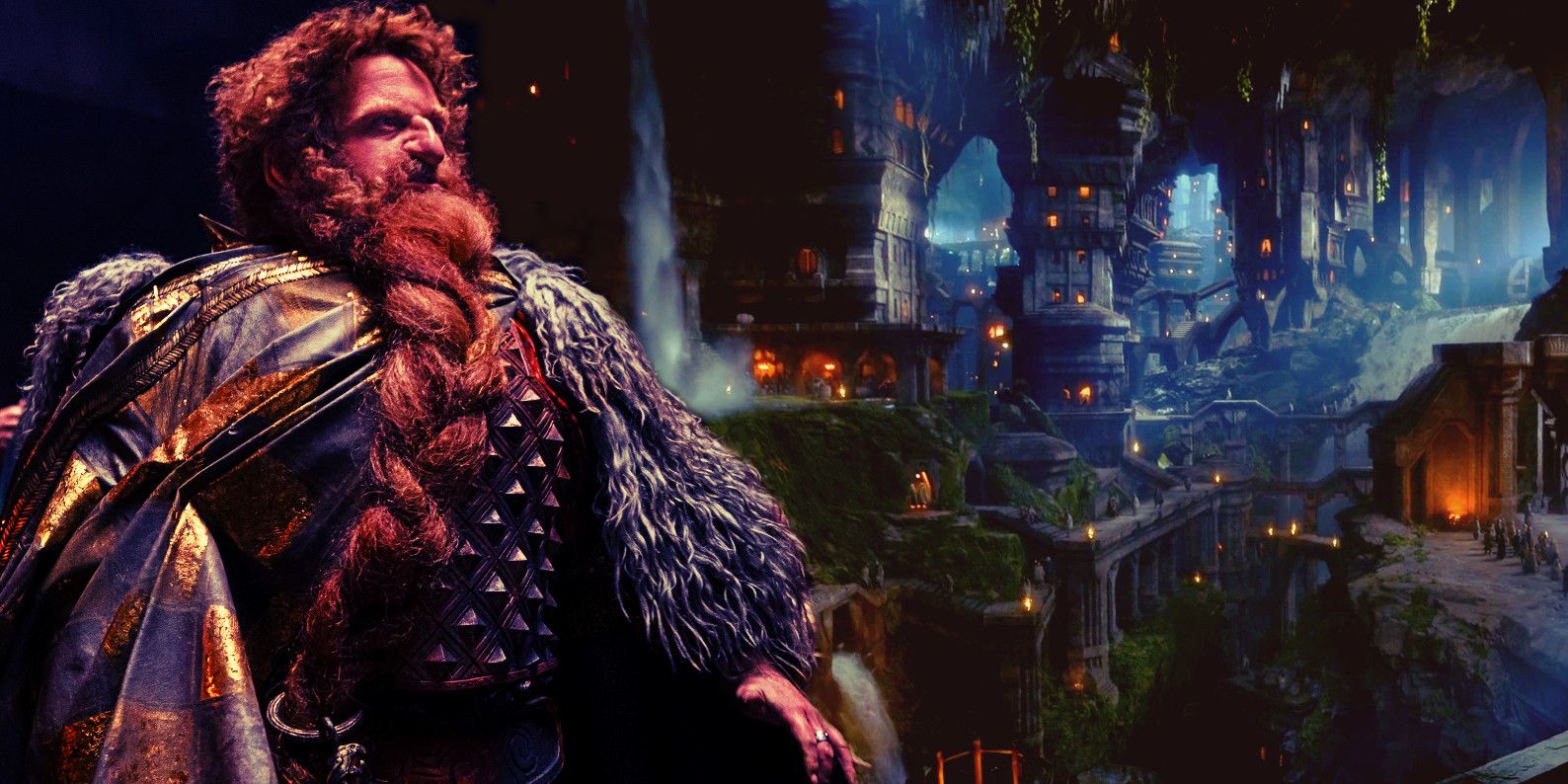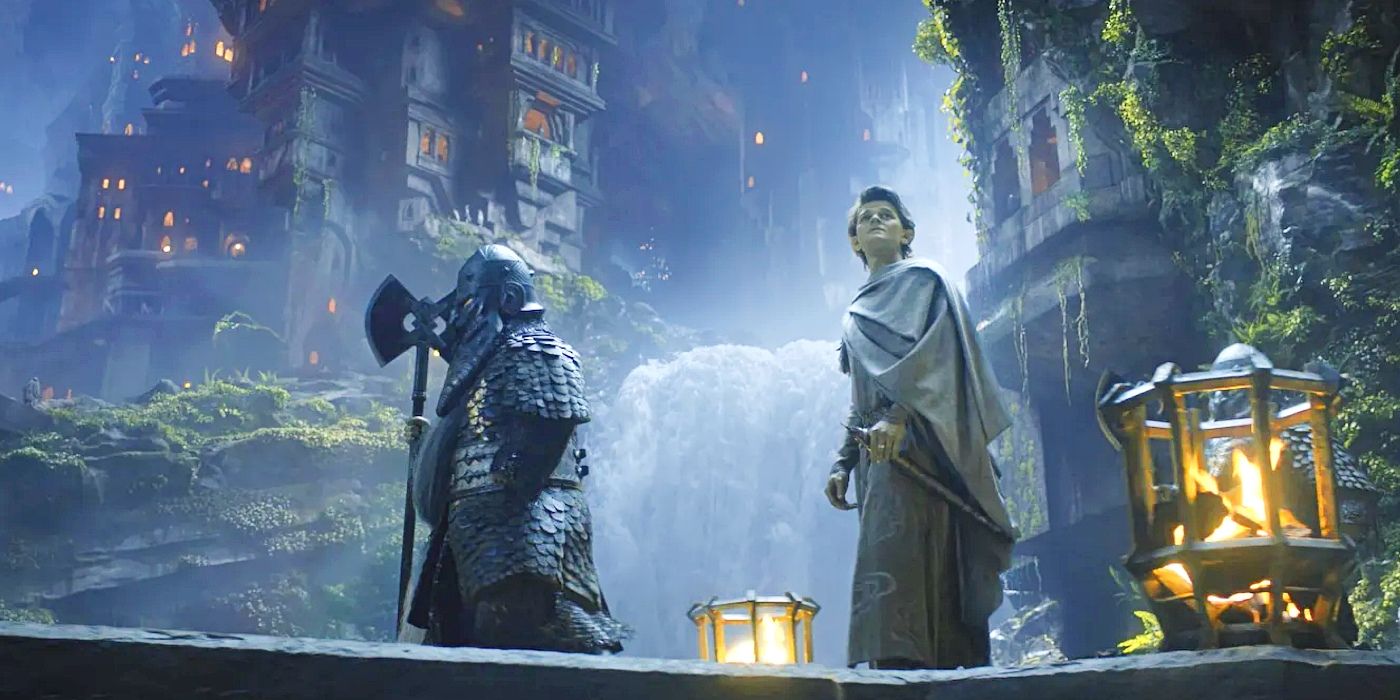Warning! SPOILERS for The Lord of the Rings: The Rings of Power episodes 1 and 2The Lord of the Rings: The Rings of Power shows a very different Khazad-dûm than the one audiences see in Peter Jackson's adaptation of The Lord of the Rings: The Fellowship of the Ring. By the time the Fellowship reaches the Mines of Moria in Peter Jackson's first The Lord of the Rings installment, it has been abandoned by the Dwarves, and evil lurks in its depths. The answer to how Khazad-dûm came to be known as Moria and house such darkness lies in one of the battles against Sauron of Middle-earth's Second Age, as well as the early history of the Third Age.
An important detail revealed in The Rings of Power's second episode shows that the Elven realm of Eregion and Khazad-dûm lay very close to one another. In J.R.R. Tolkien's writings, a friendship grew between the Elves and the Dwarves there, a storyline which has already been teased in The Rings of Power. Elven Lord Celebrimbor became close friends with Narvi, one of the Dwarves' great craftsmen, and together they created the West-gate of Khazad-dûm, otherwise known as the Doors of Durin. These are the same doors that the Fellowship uses to gain access to Moria in The Fellowship of the Ring.
As a result of this long-lasting friendship, the remaining Elves of Eregion were saved by Durin III when he sent an army to attack Sauron's forces during the War of the Elves and Sauron near the end of the Second Age. After the battle, the Dwarves retreated into their stronghold and shut the gates, closing themselves off from the outside world. Sauron harbored hatred for Khazad-dûm ever since and planned to overthrow Durin's folk at every turn. Though it would take some time, Sauron would eventually get his wish, not solely due to his power and his army of Orcs, but because of the Dwarves' own greed as well.
What Happened To Khazad-dûm During The Third Age
At the start of Middle-earth's Third Age, the Dwarven population of Khazad-dûm was starting to dwindle. Sauron had been sending his forces to try and conquer the Dwarves' stronghold. Although they were able to hold him back due to their great numbers and the strength of their fortress, their community still eventually diminished. In contrast to their shrinking population, however, the Dwarves' treasure only continued to grow as they mined ever deeper for mithril, the same precious metal that saved Frodo's life in The Fellowship of the Ring over 1000 years later.
The Dwarves dug too deeply in their search for mithril and unearthed a dreadfully evil creature from the depths of the mountain: one of Morgoth's Balrogs, the same one that Gandalf barely managed to defeat in The Lord of the Rings: The Fellowship of the Ring. The Balrog wrought destruction on Khazad-dûm and killed King Durin IV. Though the Dwarves tried to hold on to their home, they were eventually forced to retreat, and Khazad-dûm became the dark and empty shell that would eventually come to be known as Moria, or the Black Pit. Sauron then started sending troops of Orcs and Cave-trolls to populate the halls of Khazad-dûm to make it a stronghold of his own. Khazad-dûm was only populated by Dwarves once more when Balin, one of Thorin Oakenshield's company in The Hobbit, returned to Moria to reclaim it as they had with Erebor, but it was not to be. Balin and the rest of his kin were slain by Sauron's monsters a few years after returning.
It would seem that the fate of the Dwarves in Middle-earth is to fall prey to their greed. Khazad-dûm was overrun by a Balrog when they dug too deeply for mithril, and Erebor was claimed by a Dragon when word of its immense wealth spread far and wide. There is no denying, however, that the Dwarves of Khazad-dûm as depicted in The Rings of Power are incredibly skilled craftsmen, and that seeing the glory of Khazad-dûm before it became known as Moria was truly a sight to behold in The Lord of the Rings: The Rings of Power's second episode.


